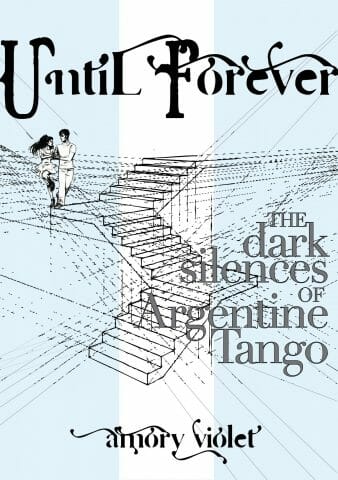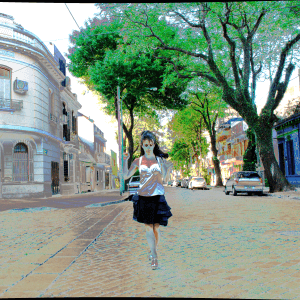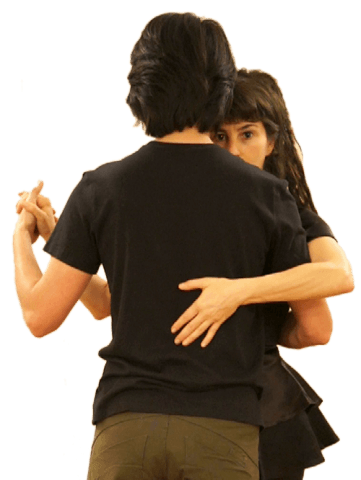Researching the schools in Berlin, I came across this interview with Thomas Rieser, founder of Nou Tango, Berlin. The interview just made me want to ask him more questions, and he kindly agreed.
My first question was the obvious one from the other interview, which was to ask him more about the fact that he hasn’t been to Buenos Aires. This is such an unusual, perhaps heretical position, that I wanted to hear more.
“Tango is rich and deep in Berlin. Nothing is missing emotionally. I know it’s different in Buenos Aires. I’d like to go to experience it. I’d like to go when tourists aren’t there…
I don’t need Buenos Aires as part of my work. I’m not a professional dancer. For those people, you need the experience of nights in Buenos Aires. It’s getting competitive there. It’s essential to be very good. That would change your dance. As a teacher and organizer I get a lot of information from visitors. Since the beginning I’ve had very good dancers come to me.
The culture is important, that tango is social. That’s the top ideal. I want people to treat it as a social dance. The tradition and Argentina as a center is important to me. I can’t do tango without culture and roots. The social aspect is part of the tradition. As long as you respect those roots, it’s tango.”
What do you mean when you say tango is “social”?
We are not dancing alone, and not with a group of 3 or more, but in pairs of 2. But we are moving in a larger group, consisting of many pairs of 2. If we don’t pay attention to this fact we can’t dance Tango, we can have a party with tango-non-tango music and dance tango moves, but we are not celebrating what I think is the essence of tango, the shared heartbeat, in a room with other joined-heartbeats. To me tango is the one dance that is really working this social aspect very deeply. I can feel it when it’s present at a milonga, it radiates positive and loving power.
Tell me about your role – as organizer, not maestro. How did you come to this?
“I have good connection with many of the tango artists. They respect me. They don’t feel I’m looking for a commission or recognition. As a dancer you want to be admired. I’m not like that. They feel respected.
My relation with the artists is friend-based. Tango is different because you don’t make much money. The top dancers make 4K/weekend. And only the top dancers in the world make this. In other professions the best in the world are making a lot more money. So that tells you something about the whole industry.
I only work with people who do it because they really want to do it. I need a friendship, so they trust me and I do my best to promote them. I need them to do their best.
I’m not a front stage personality. I like to be in the background. I do a lot from there. At my milonga, a talk a lot to people and I see a lot. I’m there at work, so I experience the milonga differently than when I go as a dancer for fun. At my own events I have a different mind-frame. The way I feel is different. I am the foundation.
It needs to be flowing and energetic, happy and smiling, with a warm core, and fun.”
What do you do to maintain the atmosphere?
“The space needs to be taken care of. Clean but not too clean, flowers, good light, good music, not too low. Awareness.
Sometimes you see that people get nervous that something is wrong. If people are not enjoying, I feel uncomfortable. As an organizer you look for something. Or the music is too loud, or the people are too loud. I will ask the DJ to bring the power down with a quiet tanda. The host has an important role. It’s not just provide the space, invite a DJ, and party yourself.
At a good dinner party, someone is responsible and takes care of the event. Introducing people, noticing people who come alone. If someone is alone too long, I engage them in conversation. I introduce people to each other. Everybody feels recognized.
For flash mobs, I use powder for the floor. But it’s not only to make it slippery. It’s also to create the space, to mark the start. The powder is the start.”
What’s happening in Berlin and what’s up with this “marathon style”?
“Berlin has a big scene. People start to dance and then stop learning and dance for fun. Here in Berlin, we’re not so ambitious. We are having fun. But some very young dancers don’t enjoy Berlin because the level of revels isn’t high enough. They to Paris and certain gatherings.
The seriousness of what you call the “marathon” group has to do with their definition of what tango is. They get extremely playful and creative with the music. In order to really dance it they need to be more experienced and talented. But they’re just doing it for fun. Their doing it to be part of the scene. It’s a scene. For people here it’s a hobby, and it becomes a lifestyle. They go 5-7 times per week. You build rules for your group.
But I think it’s really a fashion they (and others) are practicing, and thus it shows many effects of something temporary and in a way rather exclusive. I like this fashion, as it is calm and motivates many young dancers, as the scene/crowd is rather young.
When I dance, I don’t do much. I enjoy doing very little, with good connection. To have four nice songs, then it’s nice!
Friday at Nou is traditional music and we have a reputation of being rather high-level, and it’s friendly. Friends meet, everyone is welcome, young and old, advanced and beginner. It’s a scene, but not closed. We also have Monday, which is the night you describe as “smiling”, because we have many students and friends who like alternative music. I enjoy DJing alternative music. People may come both nights. Alternative music is funny and goofy. Traditional music is the dance flow, embrace, connection, deep content smile, whereas alternative music is about laughter.
Many of us started at TangoLoft. At some point, people stop going there. They disconnect and judge it as inferior and bad and “not tango”. People categorize: real/not real, good/bad…
It’s true that it’s separated, but we have a nice, accepting scene. Even though people say “alternative isn’t tango”, but it’s ok if their friends do it. And some dancers say “how can you listen to traditional music all night? It’s all the same.” But we don’t have factions and fighting groups.
For me it’s an open art form and it’s social, that’s the roots.”














